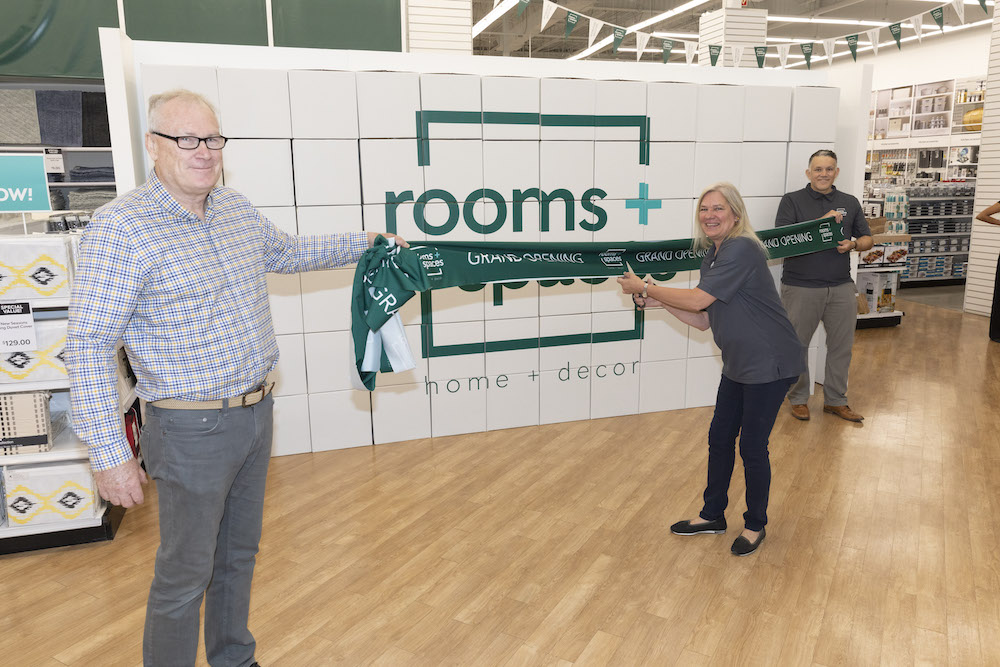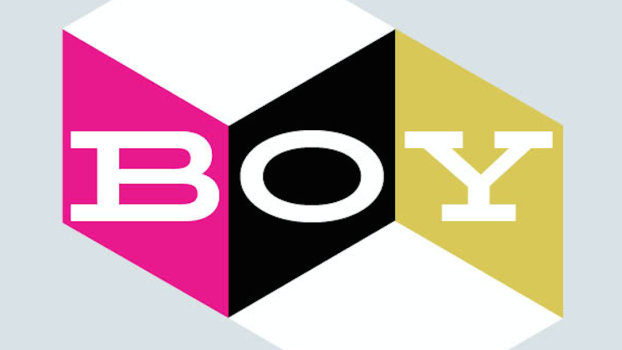
(From left to right) Greg Dyer, president of Rooms + Spaces, Nora Sulcs, store manager at the Woodbridge Rooms + Spaces and Jon Michael Roman, VP of merchandising at Rooms + Spaces.
By Will Novosedlik
Canada has often been a place where some American retail comes to die. Think Nordstrom, Bed Bath & Beyond, Target and Sports Authority.
Industry veteran Greg Dyer understands why. “I think there is always a sense that we are the 51st state. American companies look at us and say, ‘Well, you look a lot like us so we can probably do things up there the way we do things down here.’ But they overlook the fact that we have less disposable income. We have smaller homes, so we’re a little bit more space-challenged. We have more of a European flavour in the way we decorate. We entertain more often, but more casually. And we’re more demographically diverse.” Americans might also overlook the fact that the weather is a lot colder. Like the time Sports Authority came to Canada and decided not to carry hockey equipment.
The brains behind Canada’s newest retail banner, Rooms + Spaces, Dyer and entrepreneur Doug Putman, won’t be making that mistake with their “inspirational, aspirational home décor company.” Dyer has worked at several American retail banners, including Bed Bath & Beyond and Doug Putman, founder of Ancaster-based Putman Investments, has bought some of the most iconic brands in Canada, the U.S. and the U.K., including Toys “R” Us, Sunrise Records, HMV in the U.K., and FYE, the largest pop culture chain in the U.S.
At Rooms + Spaces, Canadians will find a broad range of high-quality, affordable products – from at-home essentials and trendy must-haves to unique brands that can’t be found anywhere else. Says Dyer, “When I worked at Bed Bath & Beyond (Canada), 85% of the merchandise was sourced in the U.S. At Rooms + Spaces, we’re flipping that script: 85% of our merchandise will be sourced in Canada.”
Dyer is excited about building a truly Canadian home décor brand. “The environment is more of a concern with Canadians than with Americans,” he explains, “So things like composters and recycling solutions for your kitchen are really, really important here. Looking at how you eliminate packaging is really important here. People here want to buy renewable products, so they’re interested in things like organic cotton and bamboo, which don’t resonate the same way in the United States.”
He’s also excited about the one-of-a-kind items sourced from specialized Canadian vendors, like the former firefighter turned candle maker based outside of Toronto. Or like the little-known Trudeau family in Montreal, which has been distributing housewares for 142 years. “There’s just so many phenomenal stories to be told about great Canadian products and companies. I could go on and on,” says Dyer.
And the plan for relaying those stories is to use a combination of social media and in-store merchandising. In social they’ll highlight one or two vendor stories every two weeks. Their website will feature a different Canadian vendor every week. And in-store the stories will be told through signage.
While the brand will try to strike an effective balance between digital and physical, the emphasis is definitely on the brick-and-mortar experience, which explains the ambitious launch plan. Twenty-four locations are opening across British Columbia, Alberta, Saskatchewan, Ontario, Nova Scotia, New Brunswick and Newfoundland.
Another unique aspect of the merchandising mix will be the inclusion of a Toys “R” Us store-within-a-store at every location. As the owner of Toys “R” Us and Babies “R” Us Canada, this gives Putman a chance to cross-merchandise in a friendly setting. They are calling it Toy Box by Toys “R” Us.
The merchandising mix will be seasonally adjusted. “We’ve carved out a map of 18 life events – from smaller ones, like what to do with the kids during summer holiday, to larger ones, like Mother’s Day,” explains Dyer. “Throughout the course of the year, we want to be there for Canadian families.”
While the brand is addressing some of the unmet needs of Canadian vendors by giving them a platform they can’t get anywhere else, it is meeting the needs of Canadian shoppers in a different way. “If you look at the Canadian marketplace from a mass merchant standpoint,” Dryer goes on, “you have Ikea, Costco, Walmart and Home Sense at the opening price point. And then in the aspirational, inspirational area, you have Crate & Barrel, Williams Sonoma, Restoration Hardware, Pottery Barn and West Elm. For most Canadians, the latter are not necessarily affordable. We think there’s a big opportunity in the middle to understand what Canadian families are inspired by, but then to make those things affordable and therefore attainable.”























